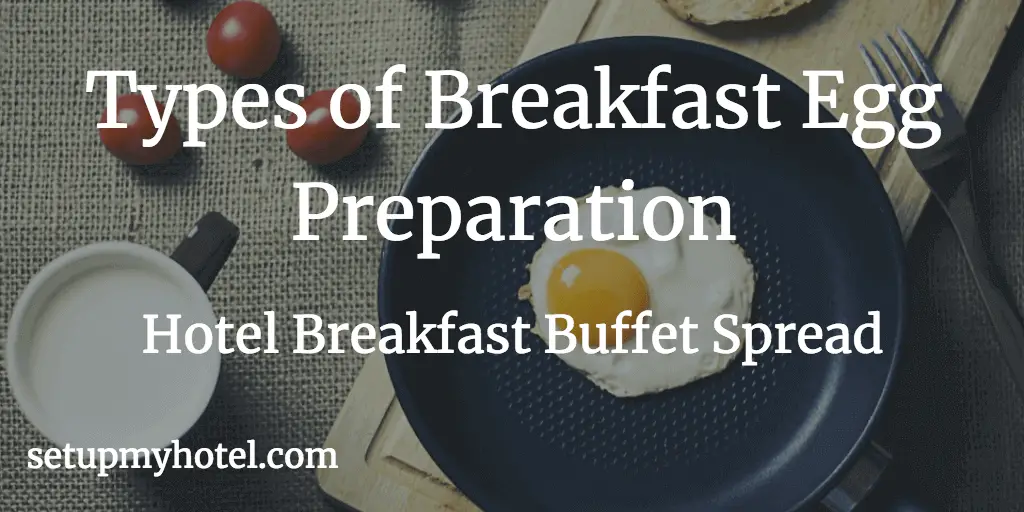7 Types of Breakfast Egg Preparations Done at Hotels | Resorts
Eggs are an excellent source of protein and a great way to start your day. There are many ways to prepare eggs for breakfast, but some of the most popular methods include frying, boiling, and scrambling.
Eggs play a major role in cooking as they can be served as a main dish, as an accompaniment to other dishes, or as an ingredient in an item. Due to its versatility in nature eggs are considered as a primary ingredient in most culinary preparations, Eggs also provide moisture, richness, texture, and structure to the dishes.
A basic rule for eggs used in breakfast cooking is freshness, one of the freshest eggs should be used for cooking because as an egg age, the white begins to win and the egg yolk begins to flatten.
All egg recipes are normally referred to as chicken eggs unless otherwise specified in the menu or preparation. Below are commonly done egg preparations for breakfast.
1. Soft Boiled Egg:
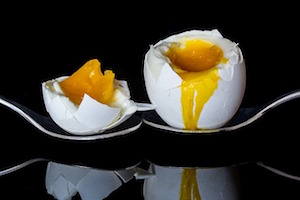
A soft-boiled egg is an egg that has been briefly cooked in boiling water, with the egg white set while the yolk remains partially liquid. Soft-boiled eggs are a popular breakfast item and are often served with toast or as part of various dishes. Here’s a simple guide on how to prepare a soft-boiled egg:
Ingredients and Tools:
- Fresh eggs
- Water
- PinchPinch: A pinch is an amount you can hold between your thumb and forefinger. of salt (optional)
Steps:
- Select Fresh Eggs:
- Choose fresh eggs for the best results. The freshness of the eggs can affect the outcome of the soft-boiled egg.
- Bring Water to a BoilBoil - To cook the food item in a boiling liquid. Very few items are boiled due to the fact that whi...:
- Fill a saucepan with enough water to cover the eggs. Add a pinch of salt if desired. Bring the water to a rolling boil.
- Lower the Eggs into BoilingBoiling - A moist heat cooking method that uses convection to transfer heat from a hot (approximatel... Water:
- Gently lower the eggs into the boiling water using a spoon to avoid cracking the shells.
- Adjust Heat:
- Once the eggs are in the water, reduce the heat to maintain a gentle simmer.
- Cooking Time:
- For a soft-boiled egg with a runny yolk and a set white, cook for about 4-5 minutes. Adjust the time slightly based on the size of the eggs and your preference for yolk consistency.
- Use a Timer:
- SetSet: Allowing an item to go from a soft or liquid state to a firmer more solid state. a timer to ensure you don’t overcook the eggs. The timing is crucial for achieving the desired level of doneness.
- Prepare an Ice Bath:
- While the eggs are cooking, prepare a bowl of ice water. This will be used to stop the cooking process and cool the eggs quickly.
- Transfer Eggs to Ice Bath:
- Once the eggs are done cooking, use a slotted spoon to transfer them immediately to the ice bath. This helps to prevent further cooking.
- Peel and Serve:
- Once the eggs are cool, gently tap them on a hard surface to crack the shell, then peel the eggshell. Cut off the top of the egg and season with salt and pepper if desired. Serve with toast or use as needed in other dishes.
Soft-boiled eggs are a versatile ingredient and can be enjoyed on their own or used in various recipes. The key to achieving the perfect soft-boiled egg lies in careful timing and quickly cooling the eggs after cooking to prevent overcooking.
2. Hard Boiled Egg:
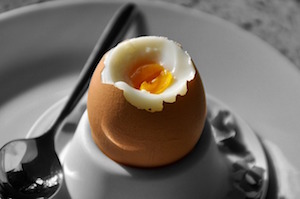
Hard-boiled eggs are eggs that have been cooked in boiling water until both the egg white and the yolk are fully set. They are a versatile ingredient and can be eaten on their own, added to salads, or used in various recipes. Here’s a simple guide on how to prepare hard-boiled eggs:
Ingredients and Tools:
- Fresh eggs
- Water
- Ice
Steps:
- Select Fresh Eggs:
- Choose fresh eggs for the best results. Fresh eggs are easier to peel after boiling.
- Place Eggs in a SingleA guest room assigned to one guest/pax. In beverage operations; a drink prepared with the standard m... Layer:
- Arrange the eggs in a single layer in a saucepan or a pot. Avoid overcrowding the eggs to ensure even cooking.
- Add Cold Water:
- Pour enough cold water into the saucepan to cover the eggs by at least an inch or two.
- Bring Water to a Boil:
- Place the saucepan on the stove over medium-high heat. Allow the water to come to a full boil.
- ReduceReduce - To boil or simmer a liquid to a small volume. Usually; this is done to concentrate flavours... Heat to SimmerSimmer - To cook food in a liquid which is just below the boiling point. The temperature of the liqu...:
- Once the water reaches a rolling boil, reduce the heat to maintain a gentle simmer.
- Cooking Time:
- Cook the eggs for about 9-12 minutes, depending on the size of the eggs and your preference for the yolk’s doneness. Larger eggs may require a bit more time.
- Prepare an Ice Bath:
- While the eggs are cooking, prepare a large bowl of ice water. This will be used to cool the eggs quickly and stop the cooking process.
- Transfer Eggs to Ice Bath:
- Once the eggs are done cooking, use a slotted spoon to transfer them immediately to the ice bath. Allow them to cool for at least 5 minutes.
- Peel the Eggs:
- Tap each egg on a hard surface to crack the shell, then peel the eggs. Starting at the wider end where the air pocket is often located can make peeling easier.
- Serve or Store:
- Once peeled, you can serve the hard-boiled eggs immediately, slice them for salads, or store them in the refrigerator for later use.
Hard-boiled eggs can be stored in the refrigerator for several days, making them a convenient and healthy snack or addition to meals. The key to a successful hard-boiled egg is achieving the desired yolk consistency and ensuring the eggs are properly cooled before peeling.
3. Scrambled Egg
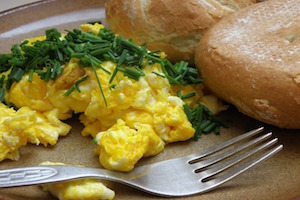
Scrambled eggs are a quick and versatile dish that can be enjoyed for breakfast, brunch, or any meal of the day. Here’s a simple guide on how to make delicious scrambled eggs:
Ingredients and Tools:
- Eggs
- Salt and pepper (to taste)
- Butter or cooking oil
- Optional additions (cheese, herbs, vegetables, etc.)
Steps:
- Crack Eggs into a Bowl:
- Crack the desired number of eggs into a bowl. Use a separate bowl if you plan to beat each egg individually before combining.
- BeatBeat / Beating is a method to move a whip or spoon rapidly back and forth to blend products together... the Eggs:
- Use a fork or whisk to beat the eggs until the yolks and whites are well combined. You can add a pinch of salt and pepper at this stage for seasoning.
- Preheat the Pan:
- Place a non-stick skillet or frying pan over medium heat. Add a small amount of butter or cooking oil and let it melt or heat.
- Pour the Beaten Eggs into the Pan:
- Once the butter or oil is hot, pour the beaten eggs into the pan.
- Let the Eggs Set:
- Allow the eggs to sit undisturbed for a moment until the edges begin to set.
- Gently StirStir: Mixing ingredients gently; using a circular motion with a spoon or whisk to ensure even cookin...:
- Use a spatula to gently stir the eggs, lifting and folding them from the edges towards the center. Continue stirring occasionally to create soft, moist curds.
- Season and Add Extras:
- Season the eggs with salt and pepper to taste. You can also add extras like cheese, herbs, or sautéed vegetables for added flavor.
- Continue Cooking:
- Cook the eggs to your preferred level of doneness. For creamy scrambled eggs, it’s best to remove them from the heat while they are still slightly runny, as they will continue to cook from residual heat.
- Serve Immediately:
- Once the eggs are cooked to your liking, immediately transfer them to a plate and serve hot.
Tips for Perfect Scrambled Eggs:
- Use Fresh Eggs: Fresh eggs make the best-scrambled eggs.
- Low and Slow: Cook the eggs over medium-low heat to avoid overcooking and ensure a creamy texture.
- Don’t Overbeat: Avoid overbeating the eggs, as this can lead to dense and tough scrambled eggs.
- Add Dairy: For creamier eggs, add a splash of milk, cream, or yogurt while beating the eggs.
- Experiment with Add-Ins: Customize your scrambled eggs with ingredients like cheese, herbs, diced vegetables, or cooked meats.
- Season Well: Season the eggs with salt and pepper to enhance their flavor.
Scrambled eggs are versatile and can be enjoyed on their own, in a sandwich, or alongside other breakfast favorites. With a few simple steps, you can create a delicious and satisfying meal.
Scrambled eggs is a dish made from eggs stirred or beaten together in a pan while being gently heated, typically with salt and butter and variable other ingredients.
Also, scrambled eggs can be prepared with or without the addition of milk. Served with bread toast, cooked ham, bacon, toasted mushroom, etc.
4. Fried Egg
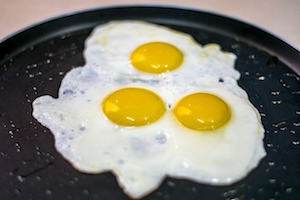
Fried eggs are a classic and simple dish that can be enjoyed for breakfast, lunch, or dinner. Here’s a straightforward guide on how to fry an egg:
Ingredients and Tools:
- Eggs
- Butter or cooking oil
- Salt and pepper (to taste)
Steps:
- Heat the Pan:
- Place a non-stick skillet or frying pan over medium heat. Allow the pan to heat up before adding any fat.
- Add Butter or Cooking OilSeveral kinds of oil are used to make salad dressing;e.g. olive; peanut; sunflower; walnut; grape se...:
- Once the pan is hot, add a small amount of butter or cooking oil. Allow it to melt and coat the bottom of the pan.
- Crack the Egg:
- Crack the egg into a small bowl or crack it directly into the pan. This helps prevent any shell fragments from ending up in the dish.
- Season with Salt and Pepper:
- Sprinkle a pinch of salt and pepper over the egg to season it. You can customize the seasoning to your taste.
- Cook the Egg:
- Let the egg cook undisturbed until the whites start to set. For a sunny-side-up egg with a runny yolk, you can cover the pan with a lid briefly to help cook the top.
- Choose Your Doneness:
- Cook the egg to your preferred level of doneness. If you want an over-easy or over-medium egg, carefully flip it with a spatula. For a well-done egg, continue cooking until the yolk is fully set.
- Serve:
- Once the egg is cooked to your liking, use a spatula to gently lift it from the pan and transfer it to a plate.
- Optional: BasteBaste - To pour dripping or other fat over a food before or during cooking in order to prevent dryin... with Butter:
- For extra flavor, you can baste the egg with melted butter by spooning the butter over the egg as it cooks.
- Enjoy:
- Serve the fried egg immediately while it’s hot. Fried eggs are great on their own, with toast, or as a topping for various dishes.
Tips for Perfect Fried Eggs:
- Fresh Eggs: Fresh eggs with firm whites and vibrant yolks make the best-fried eggs.
- Control the Heat: Adjust the heat to control the cooking speed. Lower heat helps prevent overcooking.
- Choose the Right Fat: Butter adds flavor, while cooking oil has a higher smoke point. Use your preferred fat for frying.
- Use a Non-Stick Pan: A non-stick pan makes flipping and serving the egg easier.
- Experiment with Flipping: If you’re comfortable, try flipping the egg for over-easy or over-medium results. Be gentle to avoid breaking the yolk.
The fried egg is the top-ordered type of egg preparation for breakfast. There are four types of fried egg preparation:
1) Over easy – The egg is cooked until the white is set and then flipped over to cook until the white is firmly set but the yolk should be soft.
2) Sunny Side Up – The Egg is cooked without flipping until the while is set firmly and the yolk is cooked softly.
3) Hard Fried – The egg is cooked until the white is set then puncture the yolk, flip the egg over, and cook until both white and/or yolk are cooked firmly or the yolk is still soft.
4) Basted – The egg is cooked without flipping and the yolk is basted with hot fat or butter cover the pan to steam slightly. The egg yolk is slightly whitened the white is firmly set and the yolk is thoroughly heated by soft.
Fried eggs are a versatile dish that can be customized to suit your taste preferences. Whether you prefer them sunny-side-up, over-easy, or well-done, mastering the art of frying an egg is a useful culinary skill.
5. Omelettes
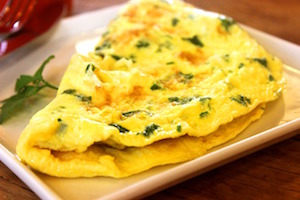
Omelets are popular breakfast items and are also served at other times of the day. Omelet can be served plain or with different garnishes like ham, cheese, onion, tomato, sliced sausages, etc. The combinations are never-ending.
Omelettes are a versatile and customizable dish that can be enjoyed for breakfast, brunch, or any meal of the day. Here’s a basic guide on how to make a classic French-style omelette:
Ingredients and Tools:
- Eggs
- Butter
- Salt and pepper (to taste)
- Optional fillings (cheese, vegetables, herbs, ham, etc.)
Steps:
- Prepare Fillings:
- If you’re adding fillings to your omelette, chop or prepare them beforehand. Common choices include diced vegetables, shredded cheese, ham, or fresh herbs.
- Crack and Beat Eggs:
- Crack the desired number of eggs into a bowl. Beat the eggs with a fork or whisk until the yolks and whites are well combined. Season with salt and pepper to taste.
- Preheat the Pan:
- Place a non-stick skillet over medium heat. Add a small amount of butter and let it melt, ensuring the pan is evenly coated.
- Pour Eggs into the Pan:
- Once the butter is melted and the pan is hot, pour the beaten eggs into the skillet.
- Swirl and Set the Edges:
- Quickly tilt the pan to spread the eggs evenly. Allow the eggs to set around the edges by gently lifting them with a spatula as they cook.
- Add Fillings:
- If using fillings, add them to one half of the omelette. Avoid overloading the omelette to make it easier to fold.
- FoldFold / Folding - The process of gently mixing of one ingredient with another. the Omelette:
- Once the edges are set and the center is slightly runny, use a spatula to fold one half of the omelette over the fillings.
- Cook Briefly:
- Allow the omelette to cook for a brief moment to let the fillings warm through and the center set. The result should be moist and slightly creamy.
- Slide onto a Plate:
- Slide the omelette onto a plate, folding it in half if necessary.
- Optional GarnishGarnish - The artistic complementing of a food item with other food or edible item.:
- Garnish with additional herbs, cheese, or a dollop of sour cream if desired.
- Serve Immediately:
- Serve the omelette immediately while it’s hot and enjoy your delicious and customizable creation.
Tips for Perfect Omelettes:
- Use Fresh Eggs: Fresh eggs with firm whites and vibrant yolks make the best omelettes.
- Control the Heat: Cook the omelette over medium heat to prevent overcooking and ensure a tender texture.
- Don’t Overfill: Avoid overloading the omelette with fillings, as it may become difficult to fold and may tear.
- Experiment with Fillings: Customize your omelette with a variety of fillings, such as sautéed vegetables, cheese, ham, or fresh herbs.
- Fold with Care: When folding the omelette, do so gently to avoid breaking it. The goal is to create a tender and creamy interior.
Different Types of Omelettes:
1. Plain Omelette: This is prepared plain only with seasonings.
2. FlatA flat silver plated or stainless steel tray used for service. Omelette: Add garnish to the egg before making the omelet, turn out without folding, colored side uppermost. Spanish TORTILLAS and Italian FRITTATAS are examples of this open-faced pancake-style omelet.
3. Stuffed and folded Omelette: Place fillings in the center of the omelet before folding.
4. Folded and stuffed: Slit the turned-out omelet along with the center of the top surface, and place in the fillings.
5. Folded Omelette: Add garnish to the egg before cooking and then fold after making it.
Once you’ve mastered the basic technique, you can get creative with different fillings and styles of omelettes. Whether it’s a classic ham and cheese omelette or a veggie-packed creation, omelettes are a delicious and satisfying dish.
Whichever type of omelette is prepared the method remains the same. Eggs are either beaten in a separate bowl or begin as you would for scrambled eggs in a pan but as the egg sets up stop stirring and shake the pan to let the egg set. When the eggs are just soft or like a runny stage add the toppings and then either fold or roll etc. as per the technique used.
6. PoachedPoached - Cooked in enough simmering liquid to cover the food. Eggs
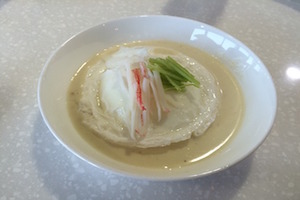
Poached eggs are difficult to prepare as keeping the form of the egg in the cooking process is difficult. The Freshest the eggs the easier to prepare poached eggs.
Prepared by boiling a sufficient amount of water in a pan and adding a small amount of salt and vinegar as this would help to hold the white around the egg yolk. After the water is boiled bring it to a simmer crack your eggs into a dish and slide it into the simmering water. Cook the egg until the desired degree of doneness is reached and carefully remove it from the water using a slotted spoon.
Poached eggs are a simple and elegant way to enjoy eggs, often used in dishes like Eggs Benedict or served on their own. Here’s a basic guide on how to poach eggs:
Ingredients and Tools:
- Fresh eggs
- Water
- White vinegar (optional)
- Slotted spoon
- Paper towels
Steps:
- Select Fresh Eggs:
- Fresh eggs with firm whites work best for poaching.
- Prepare Water:
- Fill a saucepan or deep skillet with about 2-3 inches of water. If desired, add a splash of white vinegar to help the egg whites coagulate faster.
- Bring Water to a Simmer:
- Heat the water over medium heat until it reaches a gentle simmer. Avoid boiling, as vigorously boiling water can break up the delicate egg whites.
- Crack Eggs into a Bowl:
- Crack each egg into a separate small bowl or ramekin. This makes it easier to slide the eggs into the simmering water.
- Create a Whirlpool (Optional):
- Swirl the simmering water in the pan gently with a spoon. This helps the egg whites wrap around the yolk for a neater appearance.
- Slide Eggs into Water:
- One at a time, gently slide each cracked egg into the simmering water. Be careful not to break the yolk.
- Cooking Time:
- PoachPoach: Simmering an item gently in syrup or liquid below the boiling point; while maintaining shape ... the eggs for about 3-4 minutes for a runny yolk or longer for a firmer yolk. The whites should be set, and the yolks should still be runny.
- Use a Slotted Spoon:
- Use a slotted spoon to carefully lift each poached egg from the water. Allow excess water to drain through the spoon’s slots.
- Place on Paper Towels:
- Place the poached eggs on a plate lined with paper towels to absorb any remaining water.
- Season and Serve:
- Season the poached eggs with salt and pepper to taste. Serve them on their own, on toast, or as part of a dish like Eggs Benedict.
Tips for Perfect Poached Eggs:
- Fresh Eggs: Use fresh eggs for the best results, as the whites will hold together better.
- Simmer, Don’t Boil: Maintain a gentle simmer, as boiling water can break up the delicate egg whites.
- Use Vinegar (Optional): Adding a splash of white vinegar to the water can help the egg whites coagulate faster, resulting in a neater poached egg.
- Whirlpool Technique (Optional): Creating a whirlpool by gently swirling the water can help the egg whites wrap around the yolk for a more uniform appearance.
Poached eggs are a delightful addition to various dishes and can be enjoyed in many ways. Experiment with different cooking times to achieve your preferred level of doneness for the yolk.
7. Shirred Eggs
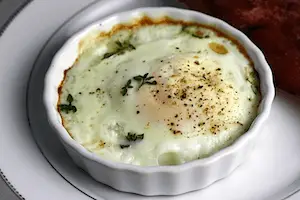
Shirred eggs, also known as baked eggs, are a delicious and easy-to-make dish where eggs are baked in individual dishes. Shirred eggs are prepared in special dishes made with chinaware or metal skillets in a variety of sizes, the prepared egg is also served in the same dish.
Prepared by buttering the dish and placing it on a hot stove top, crack and slide into the shirred dish when the butter begins to brown. Finish the egg in a hot oven till the egg white is set and the yolk is still liquid.
Here’s a simple guide on how to make shirred eggs:
Ingredients and Tools:
- Eggs
- Butter or cooking oil
- Salt and pepper (to taste)
- Optional toppings (cheese, herbs, cream, etc.)
Steps:
- Preheat the Oven:
- Preheat your oven to around 375°F (190°C).
- Prepare Individual Dishes:
- Grease individual oven-safe dishes or ramekins with butter or cooking oil to prevent sticking.
- Crack Eggs into Dishes:
- Crack one or two eggs into each prepared dish, depending on your preference and the size of the dishes.
- Season Eggs:
- Season the eggs with a pinch of salt and pepper to taste.
- Add Toppings (Optional):
- Customize your shirred eggs by adding toppings such as shredded cheese, herbs, or a drizzle of cream.
- BakeBake / Baking - To cook food by surrounding it with hot dry air. similar to roasting; the term bakin... in the Oven:
- Place the dishes in the preheated oven and bake for about 12-15 minutes, or until the egg whites are set but the yolks are still slightly runny. Adjust the baking time based on your desired level of doneness.
- Check Doneness:
- Keep an eye on the eggs as they bake. The whites should be fully cooked, and the yolks can be as runny or firm as you prefer.
- Serve Immediately:
- Once the eggs are baked to your liking, remove them from the oven and serve immediately. The yolks can be broken and mixed with the whites if desired.
- Garnish (Optional):
- Garnish the shirred eggs with additional toppings such as fresh herbs, a sprinkle of cheese, or a dollop of cream before serving.
Tips for Perfect Shirred Eggs:
- Use Oven-Safe Dishes: Ensure the dishes you use are safe for oven baking.
- Butter the Dishes: Grease the dishes with butter or oil to prevent the eggs from sticking.
- Add Toppings Creatively: Experiment with various toppings to enhance the flavor of the shirred eggs. Cheese, herbs, and cream are popular choices.
- Customize Doneness: Adjust the baking time based on your preference for the doneness of the egg yolks.
- Serve with Toast or Bread: Shirred eggs pair well with toast or crusty bread for a complete and satisfying breakfast.
Shirred eggs are a versatile dish that can be customized to suit your taste preferences. They make for a delightful and elegant breakfast or brunch option.
